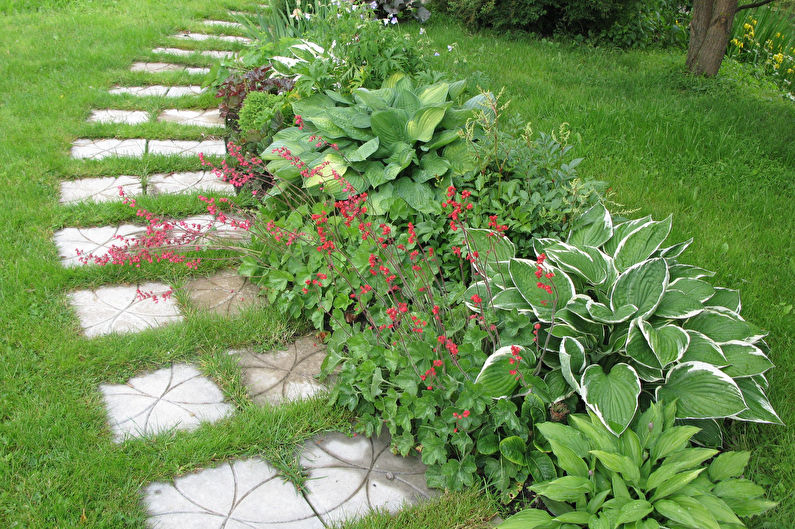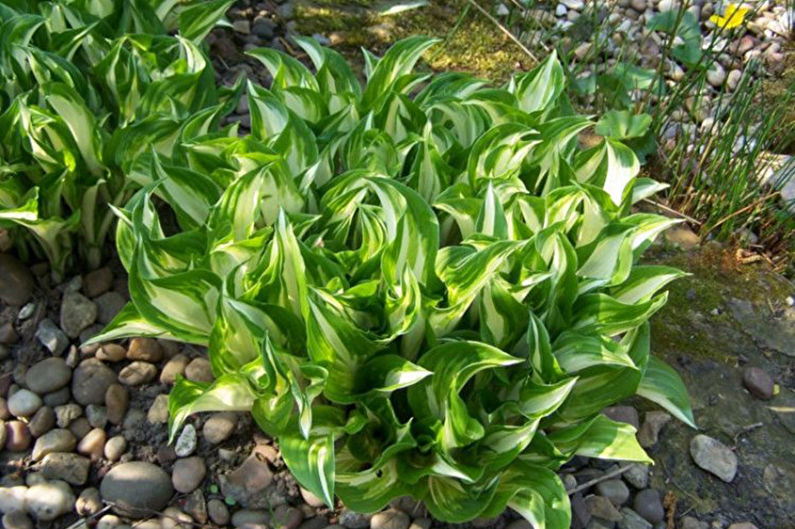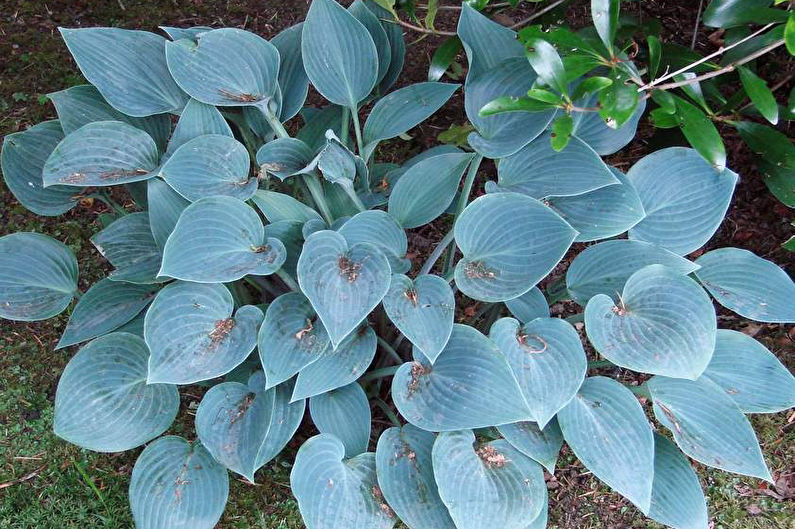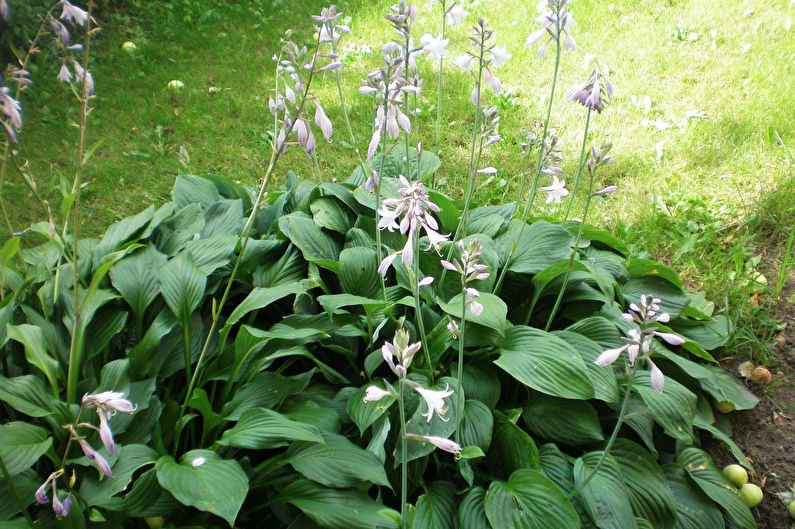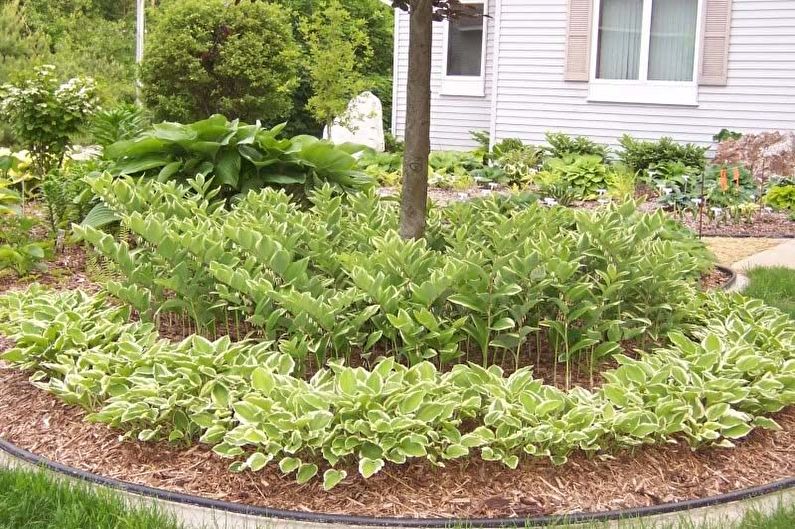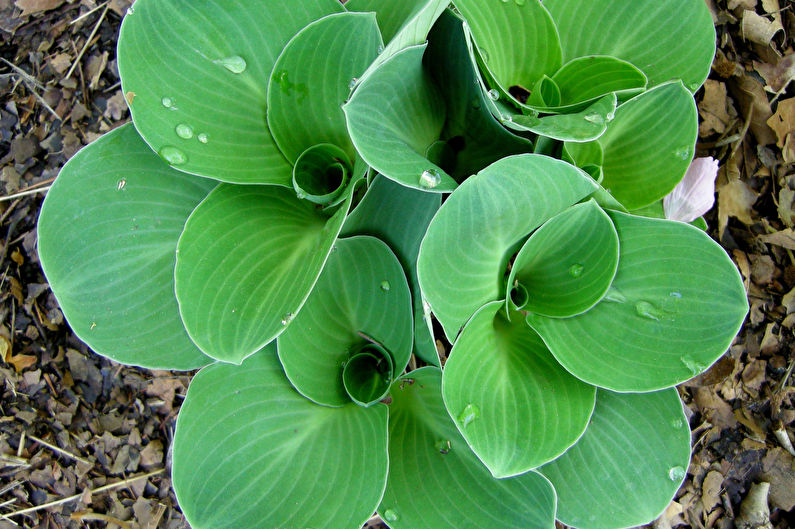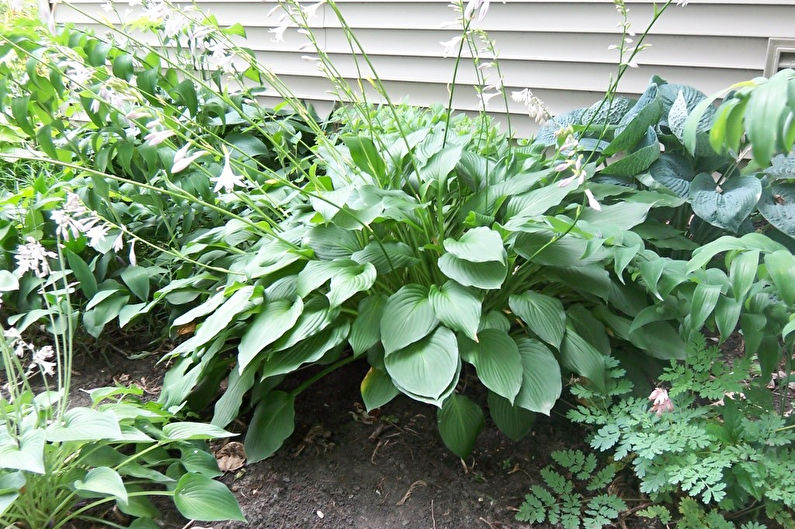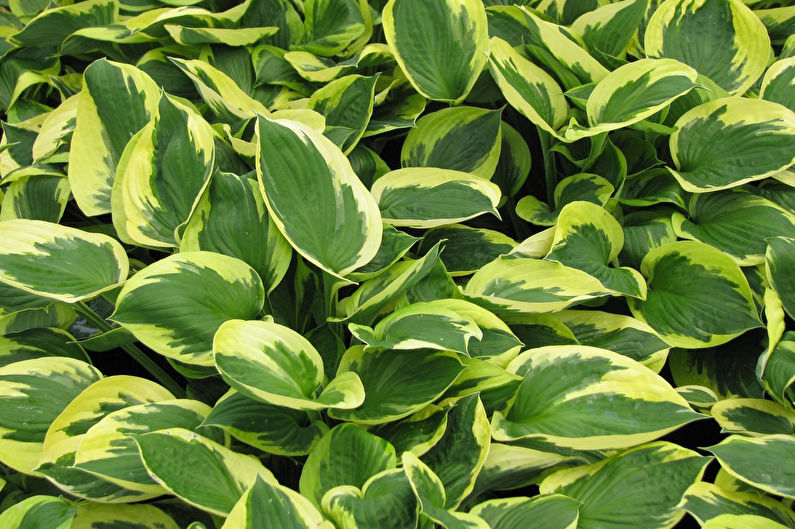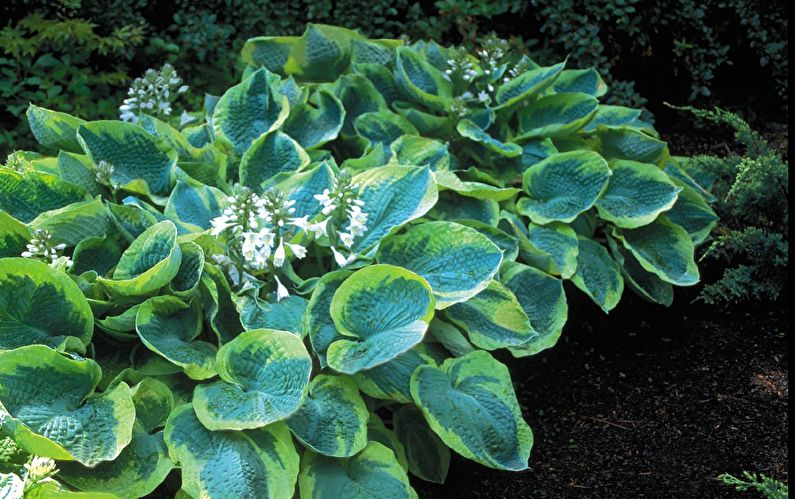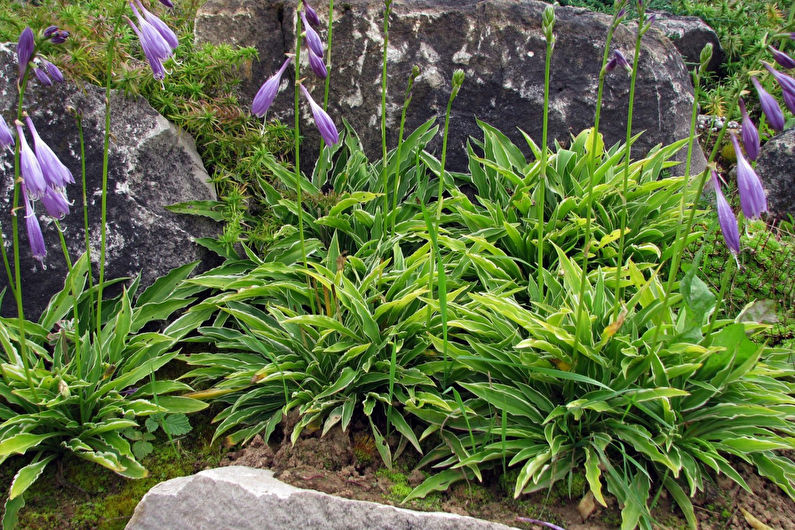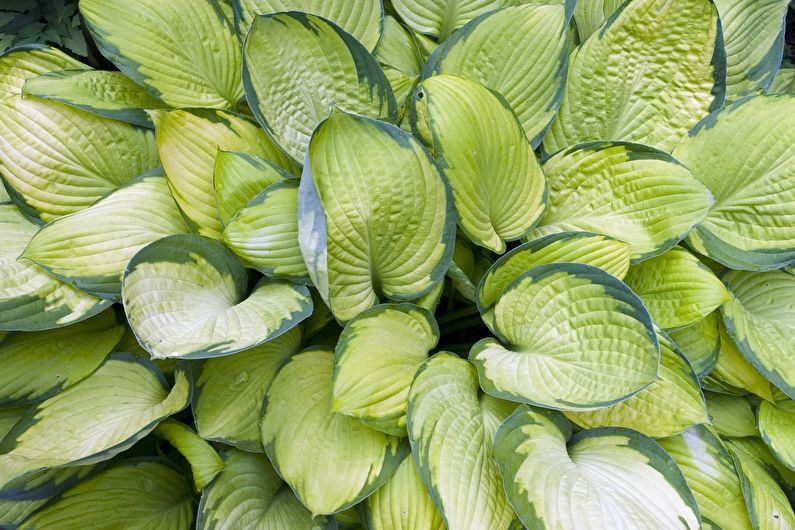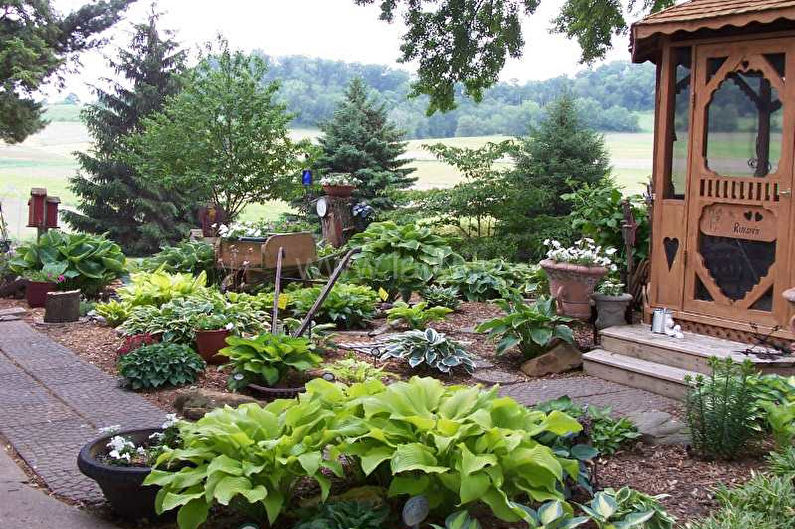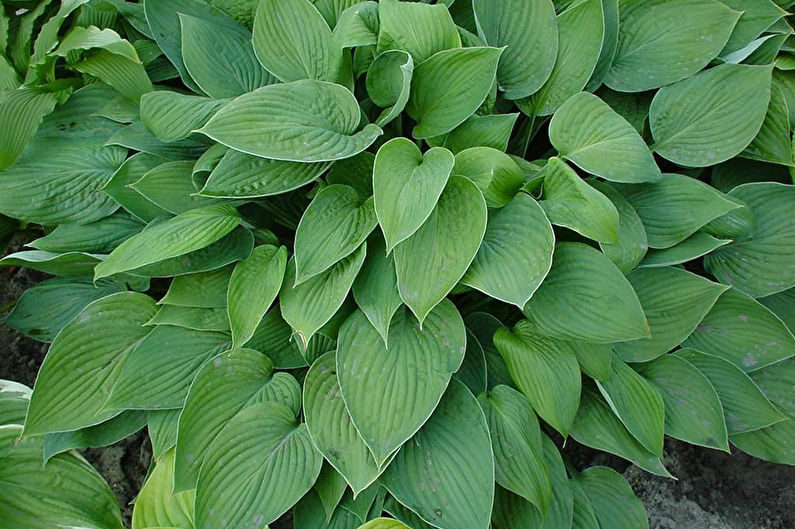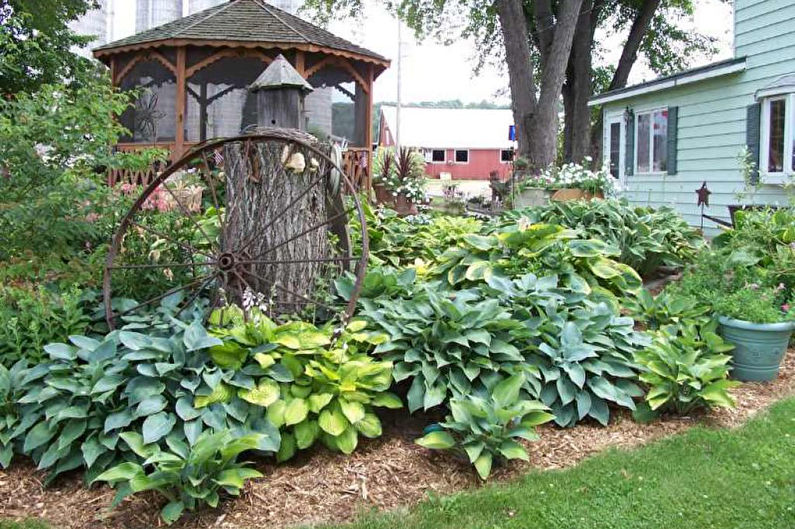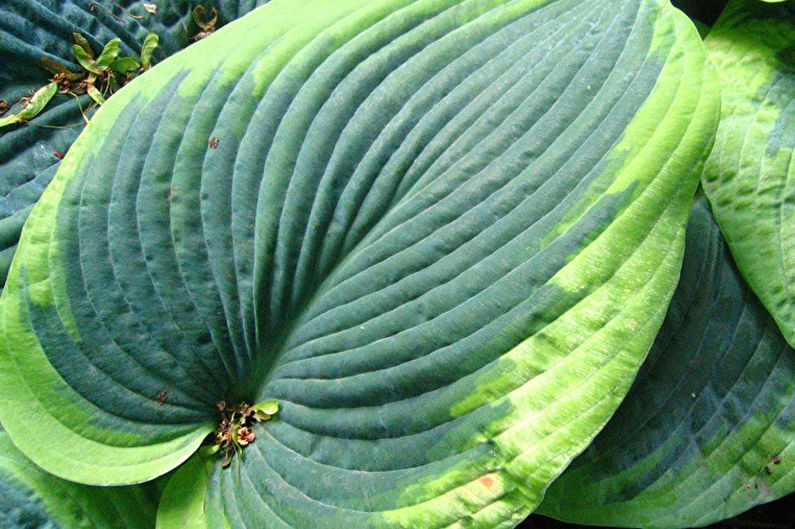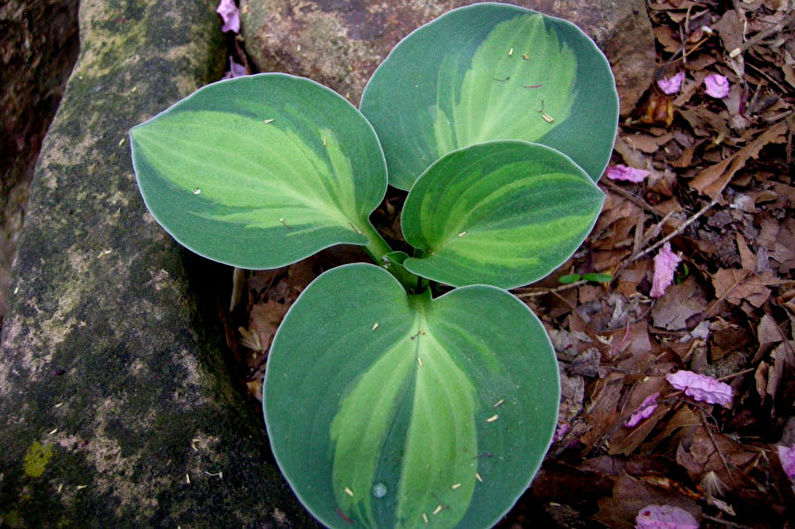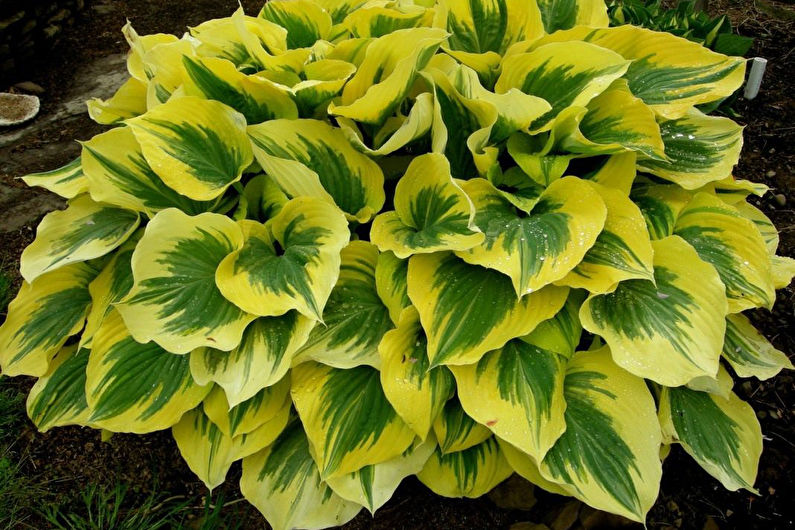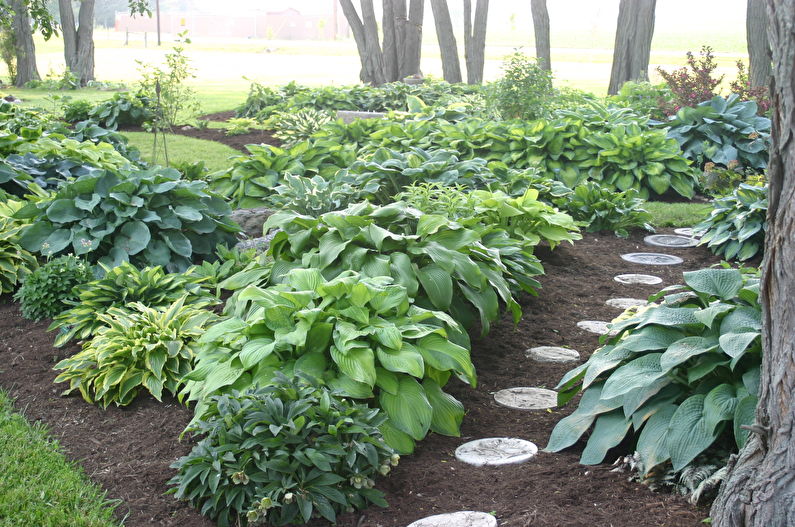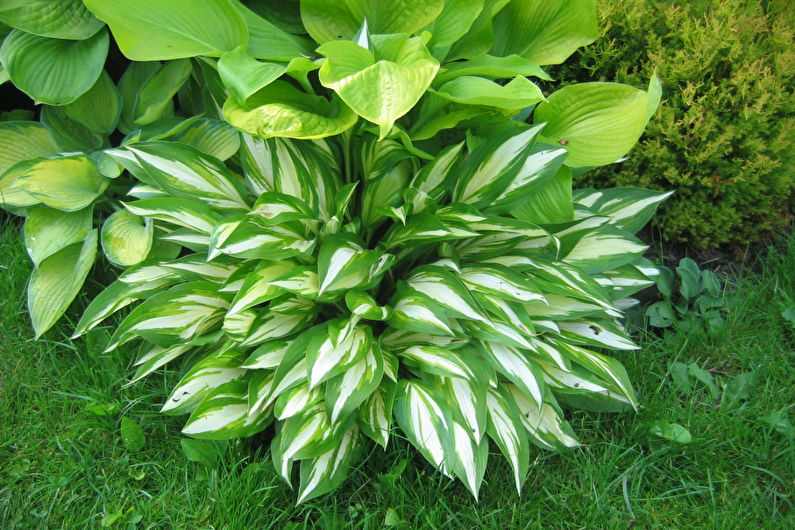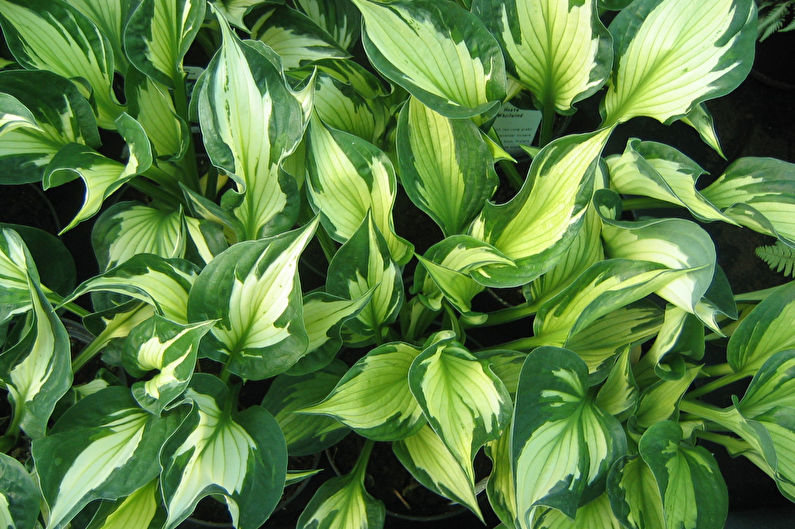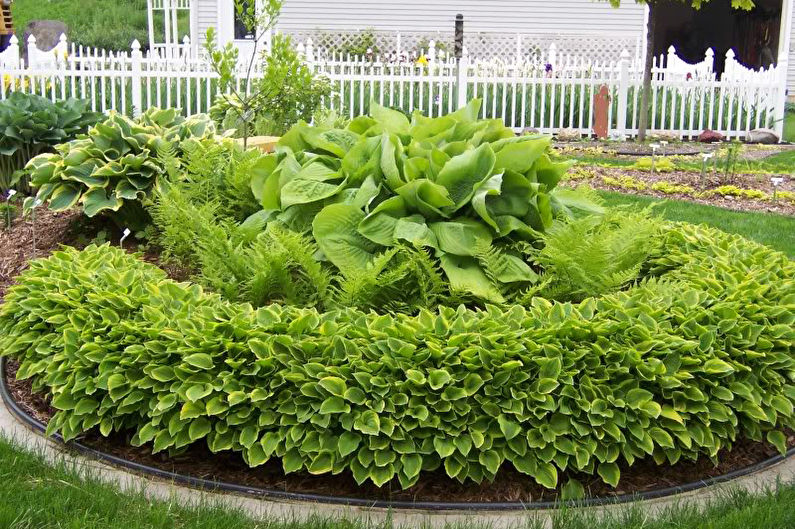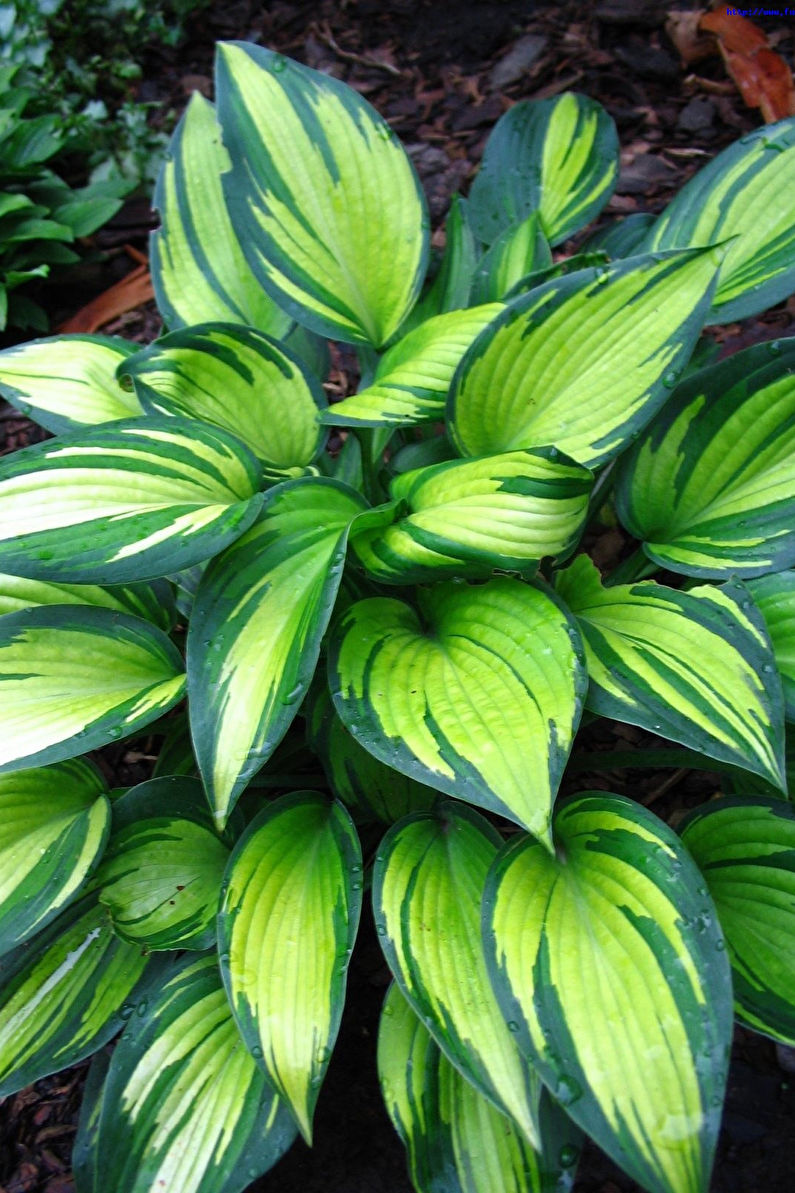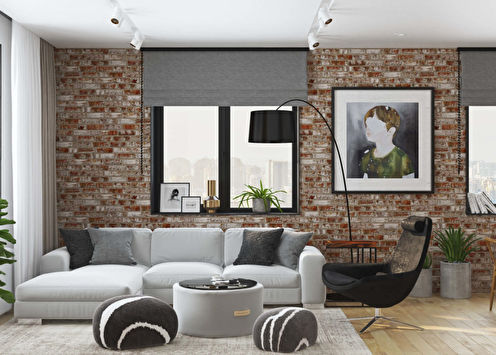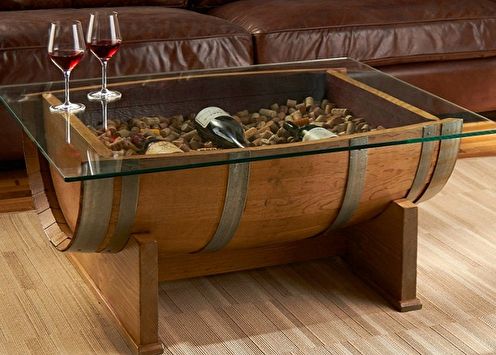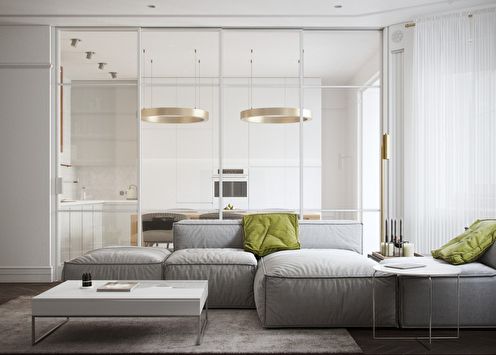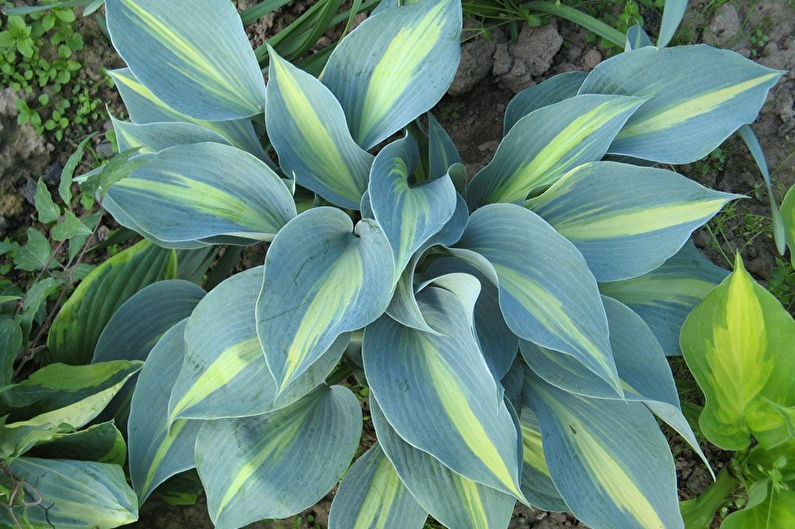
Ornamental deciduous plants perform an important function in landscape design, allowing you to create interesting compositions on flower beds, plant alpine hills, curbs of garden paths, areas around ponds, trees, buildings. For all this, the host is ideal - a perennial herbaceous shrub with beautiful, noticeable leaves that develops well even in the shade and does not require complicated care. Hosts green hemispheres maintain their elegant appearance throughout the season, tolerate frosts, and in addition, they are real centenarians, growing in one place for 20-25 years.
Types of hosts
The natural habitat of the hosts, which was also called funkia earlier, is the Far East, Korea, China, Japan. In the world there are 23 wild and cultivated species of this herbaceous perennial, and more than 600 registered varieties. Thus, gardeners are provided with a huge selection of plants, and combining their different types, you can get a unique drawing of living decoration.
Depending on the height of the bushes and the associated applications, the host is divided into the following subspecies:
Ground cover varieties (up to 20 cm) are used to fill separate areas instead of lawn grass or moss. The thick cover of the leaves inhibits the development of weeds, giving the flower beds a neat appearance. Such low plants look appropriate on rocky hills, and near artificial ponds, fountains.
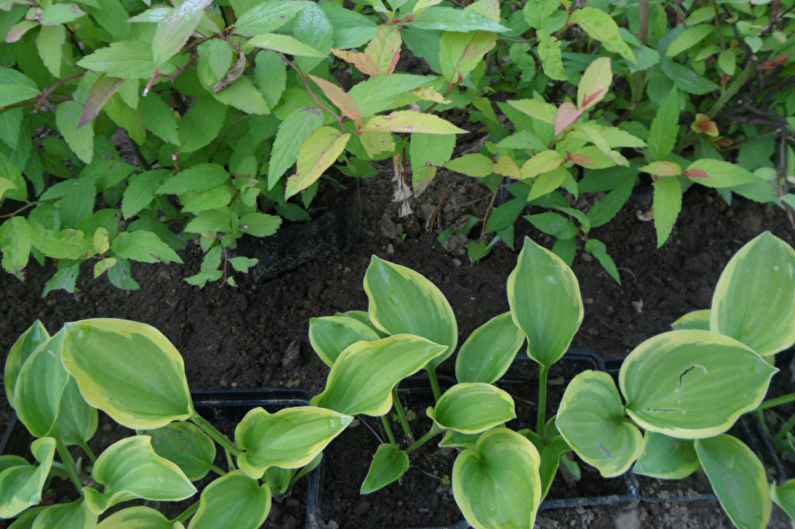
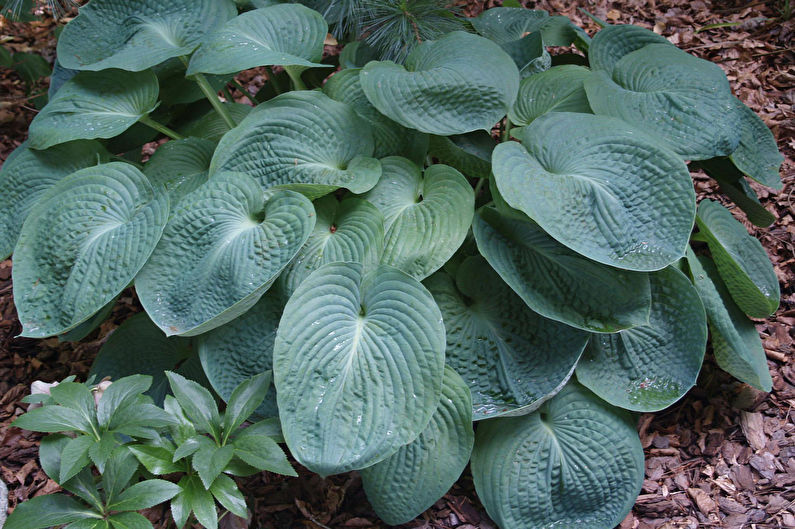
Curb hosts (20-30 cm) - the best choice for framing paths and arranging curly mini-hedges in the architecture of flower gardens. Quite often they are grown in containers with the aim of landscaping summer terraces, balconies, window sills.

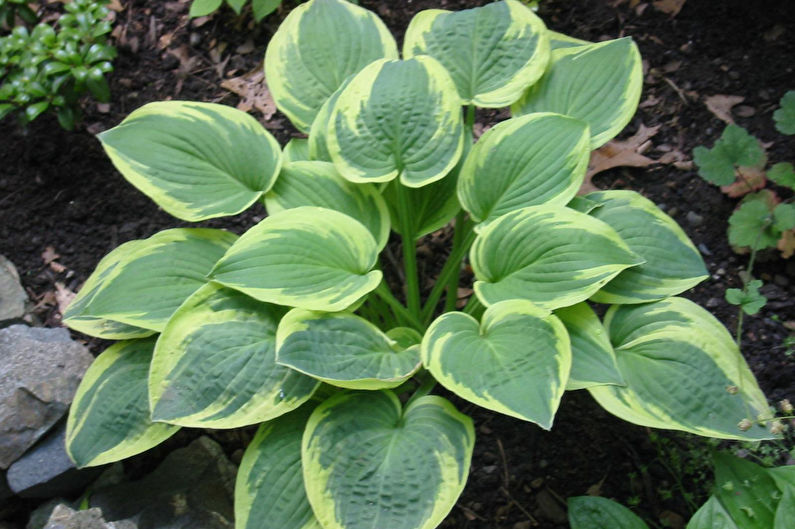
Mid-sized species (30-45 cm) create an excellent background for flowering garden plants - delphinium, lilies, gladioli, asters. A harmonious combination is obtained with coniferous trees and bright shrubs.
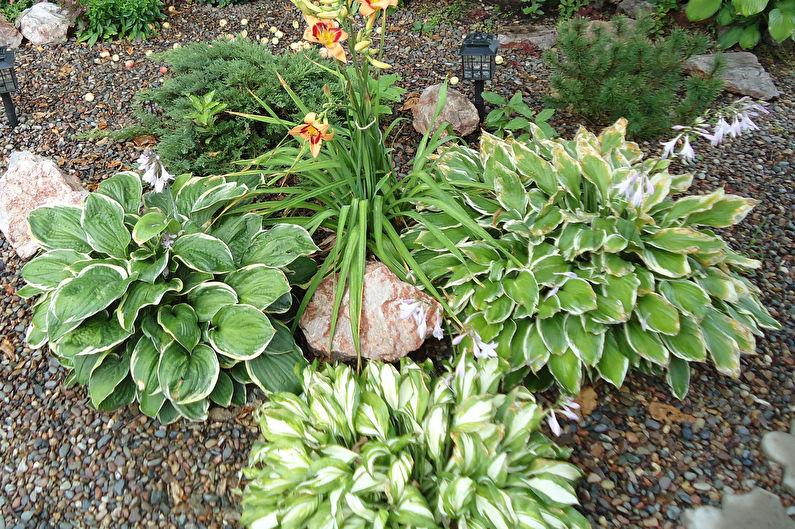
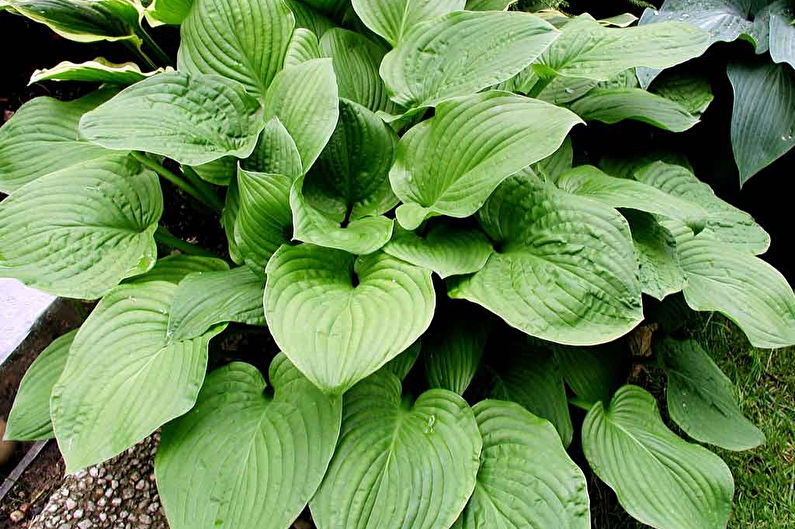
Tall bushes hosts (45-80 cm) look most spectacular on large areas, along the banks of rivers and lakes. In addition, they can be used in multi-tiered compositions, decorating the vertical space near walls, fences, wide walkways.
Hosta's decorative value is most dependent on the shape and color of the leaves. They can be heart-shaped, oval, or elongated, with a pointed tip, smooth or embossed edges. There are also a large number of textures - smooth and grooved, with expressive indentations, reaped, wrinkled. Some varieties have a glossy surface, others are covered with a waxy coating, and others are matte. The color can be either monophonic or two-color, three-color, with watercolor stains, a contrasting border around the edges, a dark green or golden middle. Hosta's palette of leaves includes the entire yellow-green spectrum from creamy white, lemon to deep aquamarine and even gray-purple.
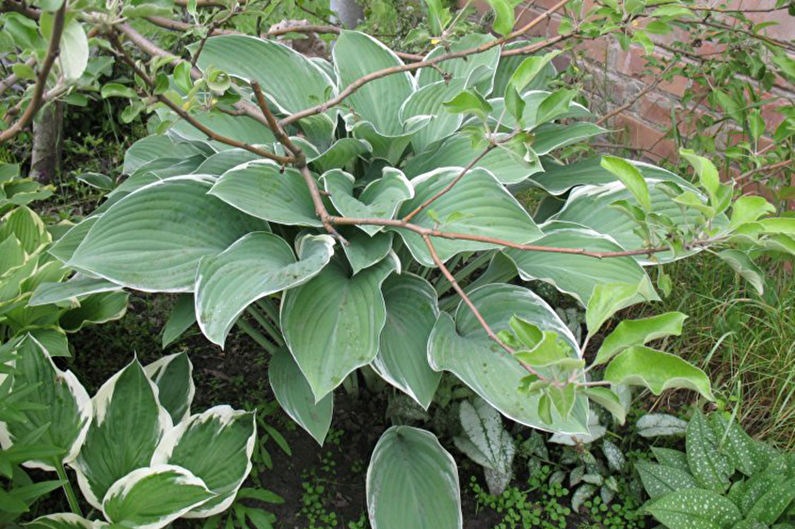
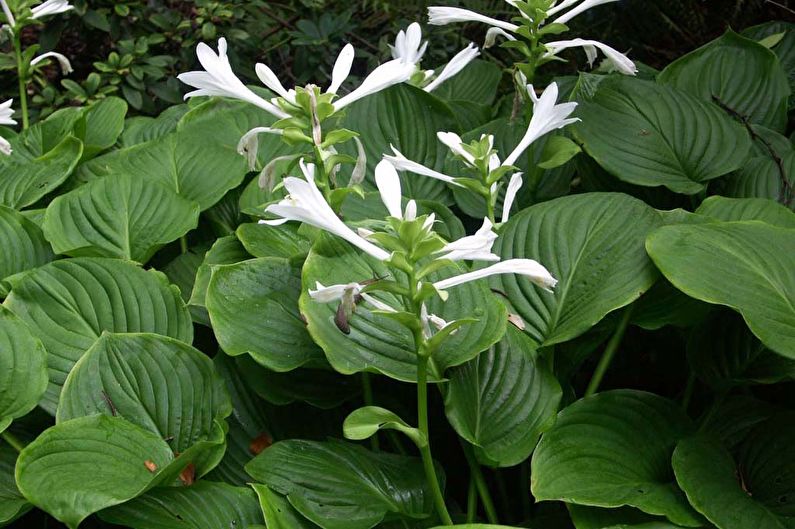
How to grow a host
Propagation of hosts is carried out in several ways - by seeds, seedlings and division of mother plants.
To get young sprouts, in April-May, seeds are sown to a depth of 5-7 mm in containers filled with turf-peat mixture. Then, regularly watering, leave them at a temperature of 18-25C. The optimum height of the tank is 10 cm, while at the bottom there should be drainage and holes for draining excess water. Under optimal conditions, seedlings will appear after about 3 weeks, and to accelerate the process, the seeds can be pre-treated with growth stimulants. It is very undesirable to allow the temperature to drop below + 18C, otherwise the growth will slow down or stop completely.
The first year of seedlings will have to be looked after, as with ordinary indoor flowers, without planting it in open ground. A plant from seeds develops extremely slowly, releasing only one leaf per season. A suitable time for transplanting hosts to a permanent place is the beginning of June, but its decorative qualities will be fully revealed no earlier than in 4-5 years, when the root system is strengthened and enough green mass grows.
Given the complexity of growing seedlings, most gardeners prefer to purchase ready-made planting material. It should be planted after warming up the soil to + 15C. Hosta is suitable for slightly acidic, loose soil with the addition of humus, peat, and rotted leaves to the depth of the bayonet. It is advisable that the site be protected from wind and direct sunlight.
Varieties with yellowish-green leaves need more light than dark green and bluish-blue. The latter will develop well in the shade, but their excessive watering, flooding and stagnation of water in the soil should not be allowed. It makes sense to shelter the host for the winter only in regions where enough snow cover does not form before severe frosts.

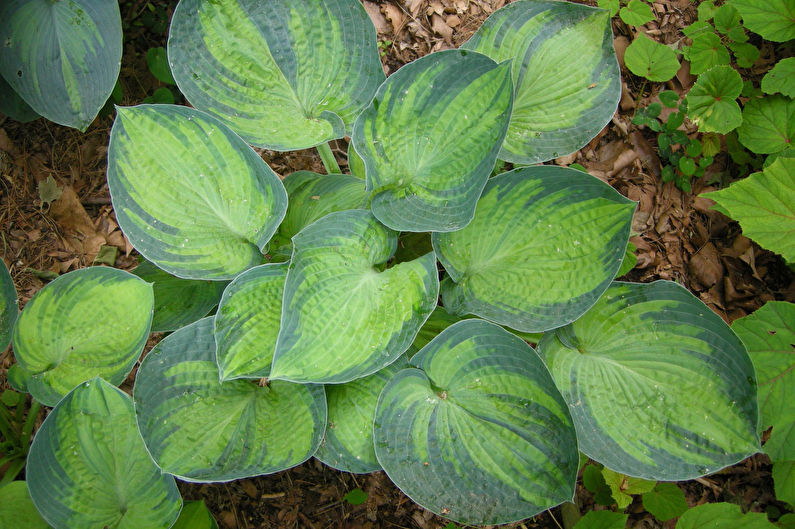
Hosting Guidelines
When compared with other garden crops, hosta care is minimal - it is enough to regularly moisten the soil, preventing its drying out. This applies, first of all, to young plants, since perennials already perfectly retain rain water under the lush caps of leaves. Only the first year or two is carried out and weeding - in the future weeds simply do not have a chance to survive because of the shade.
If when planting seedlings, organic matter was introduced into the soil, further fertilizing is carried out after several years. It is recommended to mulch the ground with peat without digging and not fluffing it, so as not to damage the adult plant. During the period of active growth (April-September), it is worth watering the host with mineral fertilizers (superphosphate, ammonium nitrate, potassium sulfate) according to the instructions on the packaging of the selected drug.
Due to the plant's resistance to most diseases and pests, you do not have to worry about methods of preventing them. A decrease in the aesthetic qualities of the host, for example, drying out of leaves, is a sign of improper care. In such cases, it is necessary to adjust the lighting, moisture and soil composition, it is possible to transplant the grass bush to another, more comfortable area.
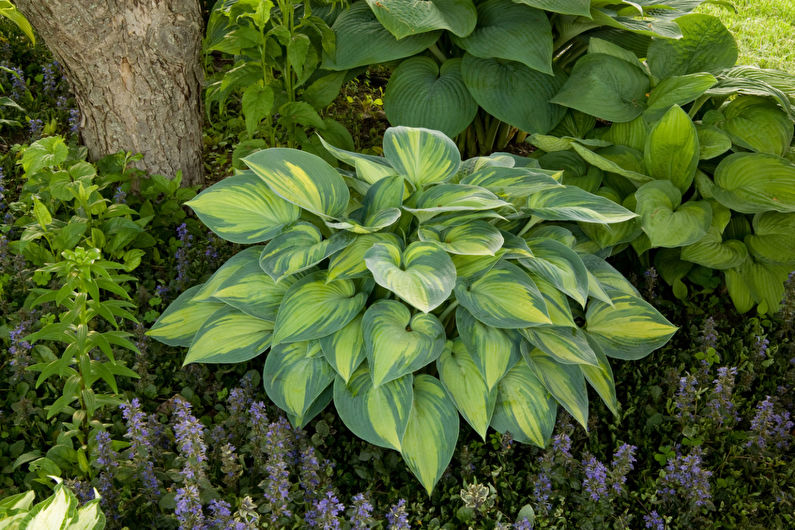
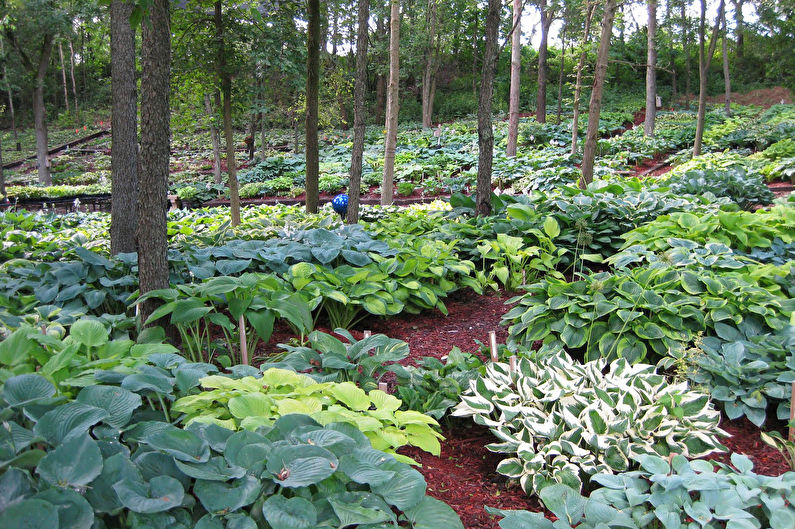
Host in landscape design and floristry
In the garden and park ensembles of the host can perform different roles - from unobtrusive background to solo part. In the first version, the covering ability of the leaves is of great importance, among which large, bright flowers, and small carpet placers look especially luxurious. The contrasting neighborhood favorably emphasizes the beauty of each plant individually, and leaves a pleasant impression of the picture as a whole. At the same time, a cluster of hosts alone can also look very harmonious: a series of identical bushes will resemble a neat hedge, and a mixture of different textures and shades will create a unique flavor with a realistic game of sun glare.
In addition to landscaping, the original leaves of the hosta are widely used in the collection of bouquets. They represent a wonderful base for any festive compositions, giving them a fresh, natural look and highlighting the saturation of colors.
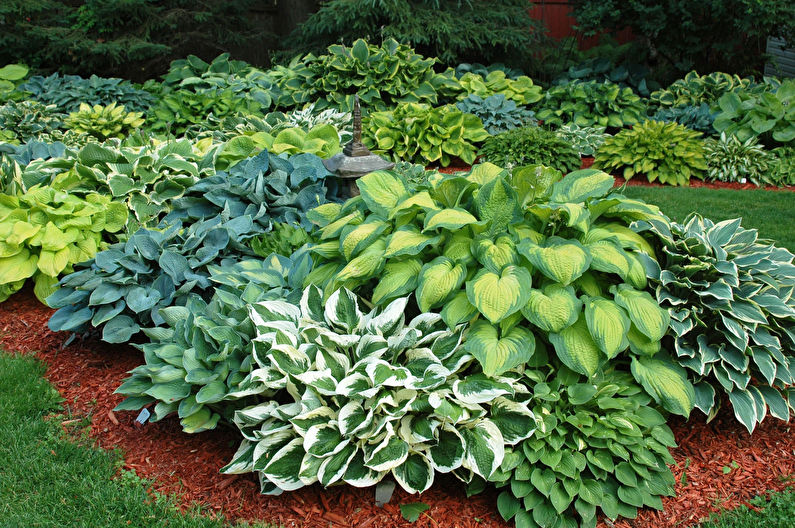
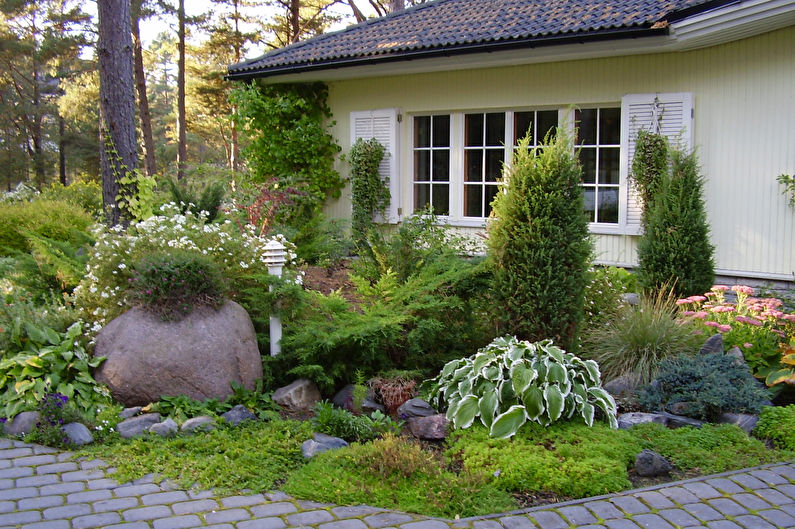
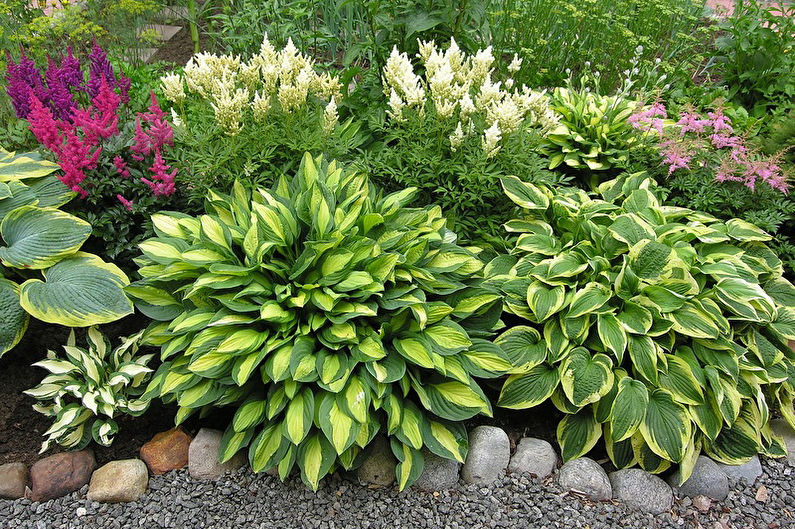
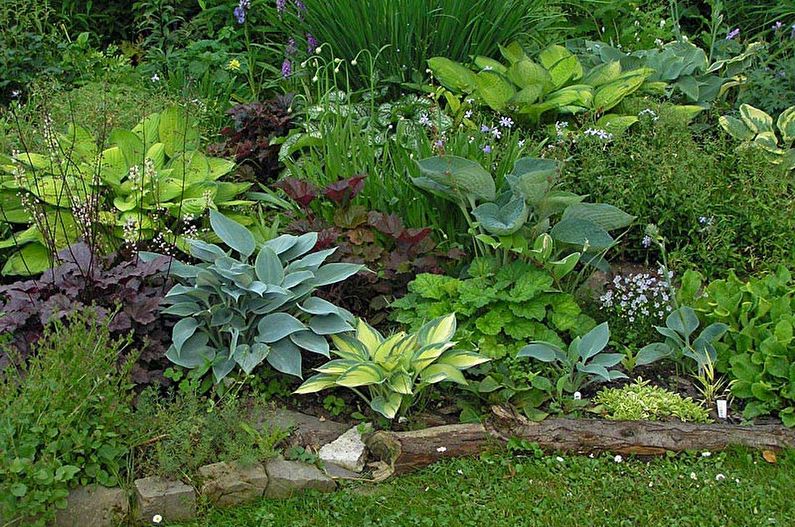
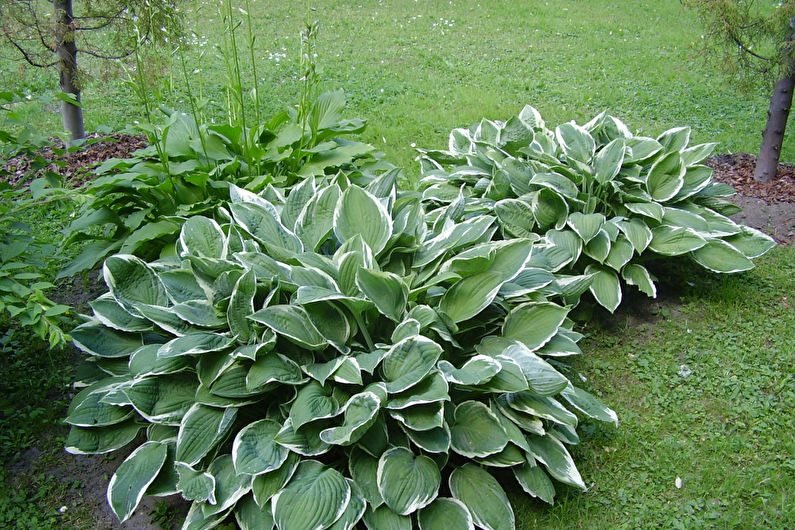
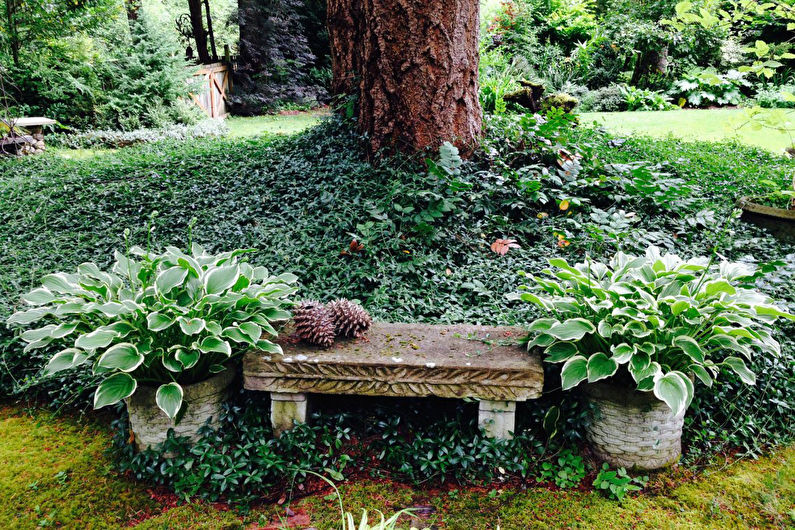
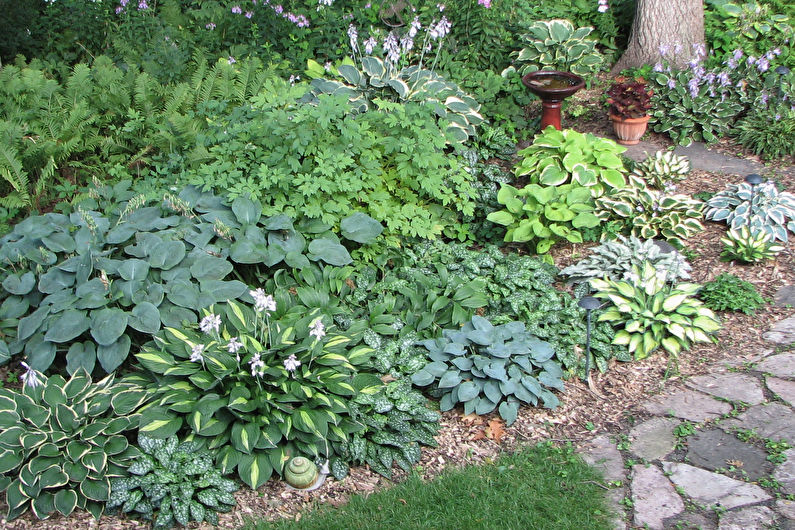
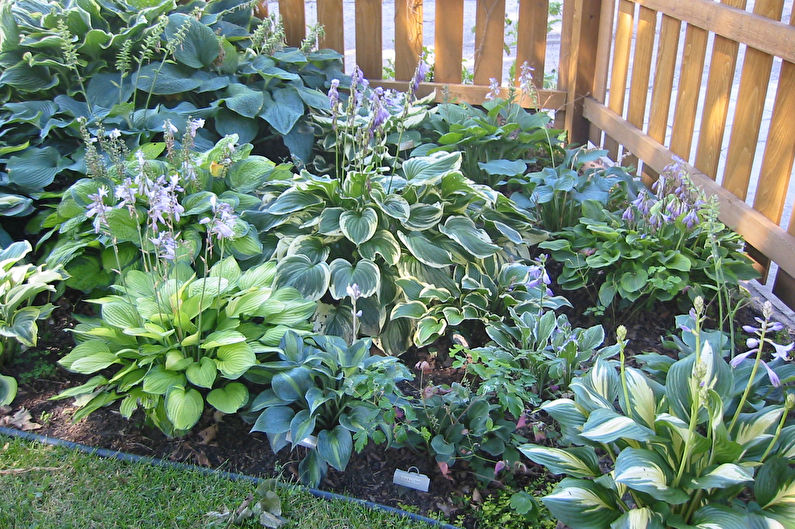
Hosta - photo
The host grassy bush attracts gardeners with its unpretentiousness, ease of care and longevity. In addition, the plant will help create interesting green compositions in the flowerbeds, thanks to the unique appearance of green leaves, a variety of images of which we have collected in our photo selection. Enjoy watching!

